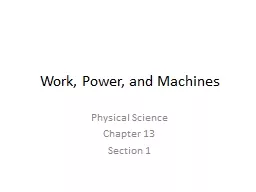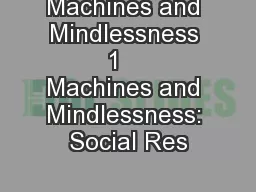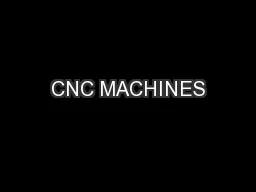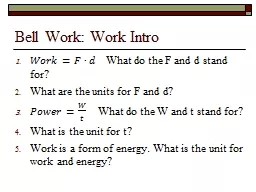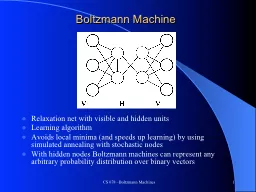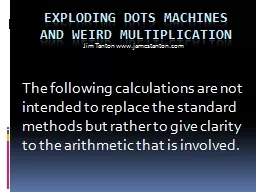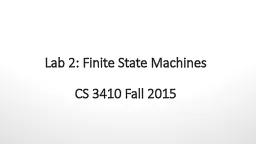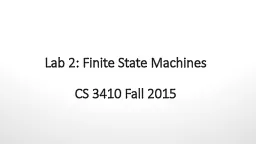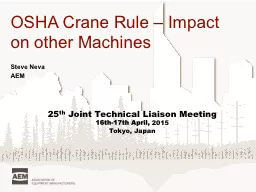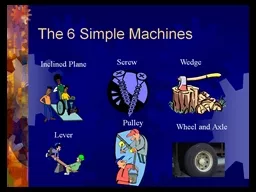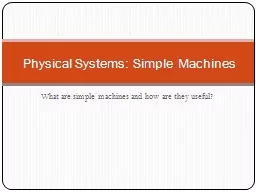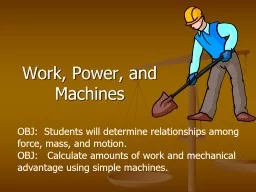PPT-Work, Power, and Machines
Author : natalia-silvester | Published Date : 2019-12-22
Work Power and Machines Physical Science Chapter 13 Section 1 Work Occurs when a force causes an object to change its motion or position Calculated by multiplying
Presentation Embed Code
Download Presentation
Download Presentation The PPT/PDF document "Work, Power, and Machines" is the property of its rightful owner. Permission is granted to download and print the materials on this website for personal, non-commercial use only, and to display it on your personal computer provided you do not modify the materials and that you retain all copyright notices contained in the materials. By downloading content from our website, you accept the terms of this agreement.
Work, Power, and Machines: Transcript
Download Rules Of Document
"Work, Power, and Machines"The content belongs to its owner. You may download and print it for personal use, without modification, and keep all copyright notices. By downloading, you agree to these terms.
Related Documents

